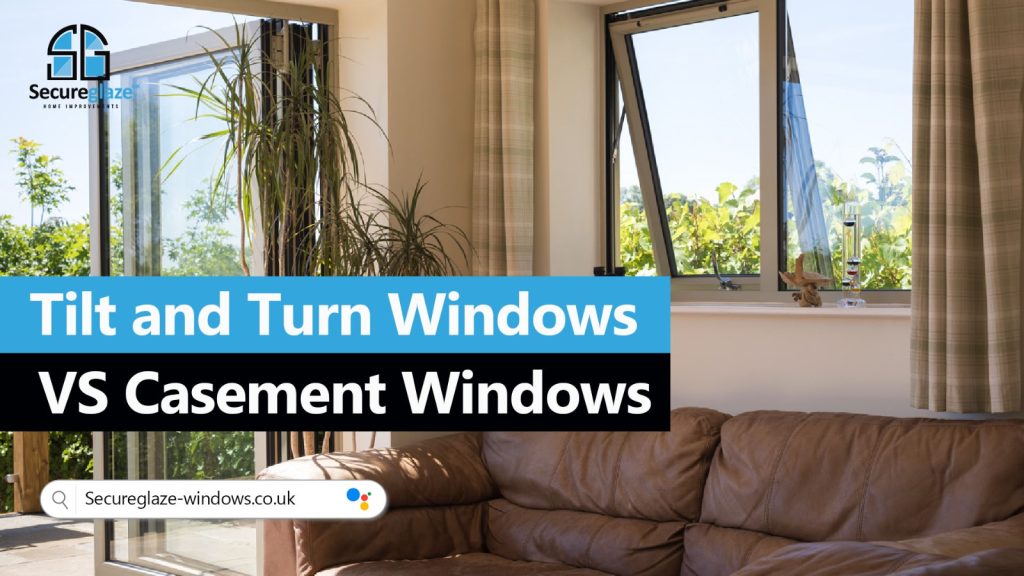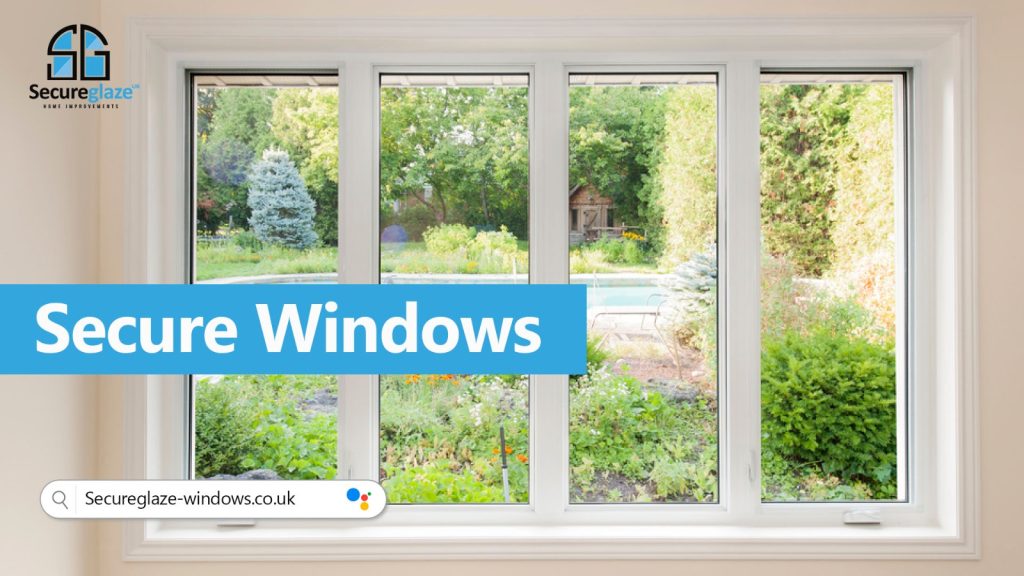If you are looking for a versatile and modern solution for your home windows, tilt and turn windows may be just what you need. With their ability to open in two different ways, they offer several advantages over traditional hinged windows. In this blog, we will dive into the features, benefits, and drawbacks of tilt and turn windows.
What is a Tilt and Turn Window?
Tilt and turn windows are a type of window that can open in two different ways. They can either be swung open like traditional casement windows or tilted inward from the top for ventilation. This dual-function mechanism is what makes them so versatile and easy to use.
These windows are often found in modern and contemporary homes, as their sleek design matches well with this style. They are also popular in energy-efficient homes, as they offer excellent insulation and energy-saving benefits.
How Do Tilt and Turn Windows Work?
Tilt and turn windows are a unique type of window with a dual-function mechanism that allows them to open in two different ways. Understanding how they work can help you appreciate their versatility and functionality. Here’s a breakdown of how tilt and turn windows operate:
1. Turning Function
The turning function of tilt and turn windows allows them to open like traditional casement windows. To activate this function, you simply rotate the handle located on the window frame. When you turn the handle, the window sash rotates around a vertical axis, opening into the interior of your home. This turning operation allows for maximum ventilation, as it provides a wide opening for fresh air to flow into the room.
The turning function of tilt and turn windows makes them particularly useful for cleaning and emergency exits. When fully opened, the window can be accessed from both sides, allowing for easy exterior cleaning or safe evacuation in case of emergencies.
2. Tilt Function
The unique feature of tilt and turn windows is their ability to tilt inwards from the top, providing ventilation whilst maintaining security. To engage the tilt function, you simply turn the handle to a specific position, typically 90 degrees from the closed position. This action causes the top of the window to pivot inwards, creating a small opening at the top.
The tilt function is especially handy during inclement weather or when additional security is desired. It allows for fresh air circulation without fully opening the window, making it suitable for times when you want to maintain privacy or need to keep rain or noise out.
3. Mechanism and Hardware
Tilt and turn windows operate on a multi-point locking system. When the window is closed, several locking points along the sash engage with the window frame, providing increased security and weather resistance. This distributed locking mechanism makes tilt and turn windows more secure and superior to traditional windows with a single locking point.
The handle on a tilt and turn window is the key control for the operating functions. It usually features specific positions for the turn and tilt functions, ensuring safe and reliable operation. Additionally, some tilt and turn windows may include a micro-ventilation mode that allows you to set the window in a slightly opened position for controlled airflow.
4. Sealing and Insulation
Tilt and turn windows are designed with excellent sealing properties. When closed, the window sash presses against the frame, creating a tight seal that minimizes air infiltration, drafts, and noise. This tight seal also contributes to their energy efficiency, as it helps to maintain stable indoor temperatures by preventing heat loss in colder months and heat gain in warmer months.
Furthermore, tilt and turn windows can accommodate various glazing options, including double or triple glazing, to further enhance their insulation capabilities. Adding insulating glass units improves thermal efficiency, sound insulation, and condensation control.
In conclusion, tilt and turn windows offer a versatile and effective ventilation, security, and energy efficiency solution. Their dual-function mechanism allows for easy operation and provides homeowners with multiple options for fresh air and access. Whether you prefer the turning function for full ventilation or the tilt function for controlled airflow, the design and hardware of tilt and turn windows ensure comfort, convenience, and peace of mind.
Types of Tilt and Turn Windows
Tilt and turn windows come in various styles, materials, and designs to cater to different preferences and requirements. From traditional to modern aesthetics, there is a tilt and turn window type for every homeowner. Let’s explore some common types of tilt and turn windows available in the market:
1. uPVC Tilt and Turn Windows
uPVC (unplasticized polyvinyl chloride) tilt and turn windows are one of the most popular types due to their affordability, durability, and energy efficiency. These windows are available in a variety of colors and finishes, making them versatile in fitting any home’s aesthetic. uPVC tilt and turn windows are low maintenance and provide excellent insulation properties, reducing energy costs and enhancing indoor comfort. They are ideal for modern and contemporary homes seeking a cost-effective window solution.
2. Aluminum Tilt and Turn Windows
Aluminum tilt and turn windows are known for their sleek appearance and durability. These windows are strong, lightweight, and resistant to corrosion, making them suitable for both residential and commercial applications. Aluminum tilt and turn windows offer slim sightlines, maximizing the glass area for enhanced natural light and views. While aluminum windows may be more expensive than uPVC, they provide a modern and sophisticated look that can elevate the overall aesthetic of a building.
3. Timber Tilt and Turn Windows
Timber tilt and turn windows are a classic choice that adds warmth and character to a home. These windows are crafted from high-quality wood, such as oak, pine, or mahogany, offering a natural and timeless appeal. Timber tilt and turn windows can be stained or painted to match any interior or exterior design scheme. While timber windows require more maintenance than uPVC or aluminum windows, they offer unparalleled beauty and charm that can enhance the architectural style of traditional or period homes.
4. Composite Tilt and Turn Windows
Composite tilt and turn windows combine the best features of different materials to create a high-performance window solution. These windows typically consist of a composite frame with an uPVC or aluminum exterior and a timber interior. By blending materials, composite tilt and turn windows offer the benefits of each material, such as durability, thermal efficiency, and aesthetic appeal. Homeowners can enjoy the aesthetics of timber on the inside while benefiting from the low maintenance and energy efficiency of uPVC or aluminum on the outside.
5. Triple Glazed Tilt and Turn Windows
Triple glazed tilt and turn windows feature three panes of glass separated by insulating gas-filled spaces, providing superior thermal performance compared to double glazed windows. These windows offer enhanced energy efficiency, sound insulation, and condensation resistance, making them ideal for homes in colder climates or noisy environments. Triple glazed tilt and turn windows are available in various frame materials, allowing homeowners to choose the right combination of insulation and aesthetics for their homes.

6. Double Glazed Tilt and Turn Windows
Double glazed tilt and turn windows are an innovative and versatile window solution that offers both functionality and energy efficiency. These windows are designed with two panes of glass separated by a layer of air or gas, providing superior insulation and soundproofing properties.
7. Custom Tilt and Turn Windows
Custom tilt and turn windows are tailored to the specific requirements and design preferences of homeowners. These windows can be customized in terms of size, shape, color, hardware, and glazing options to achieve a personalized look that complements the architectural style of a home. Custom tilt and turn windows allow homeowners to create a unique and bespoke window solution that meets their functional and aesthetic needs.
In conclusion, tilt and turn windows are available in a variety of types to suit different architectural styles, budgets, and performance requirements. Whether you prefer the affordability of uPVC, the durability of aluminum, the elegance of timber, the versatility of composite, the energy efficiency of triple glazing, or the customization of bespoke windows, there is a tilt and turn window type for every homeowner’s needs. Choosing the right type of tilt and turn window can improve the comfort, aesthetics, and energy efficiency of your home for years to come.
A Quick Review on Upvc Tilt and Turn Windows vs Casement Windows

Tilt and turn windows open inwards and outwards, allowing them to be opened fully for ventilation. Casement windows open outwards only; however, they do provide better security as the opening is smaller. Tilt and turn windows are also more energy efficient, as they can be left open slightly to let in air but keep out rain.
Features and Benefits of Tilt and Turning Windows

Multiple Functions
As mentioned earlier, tilt and turn windows provide two opening modes, unlike traditional windows. By turning the handle on the window frame, the window sash can be tilted inward to provide ventilation even when it’s raining. Additionally, when the handle is turned in the opposite direction, the window can be opened fully like a traditional casement window. This versatility is one of the primary benefits of tilt-and-turn windows.
Easy to Operate
Tilt and turn windows are easy to use as they operate using a single handle that performs both the tilting and turning operations. This makes them especially useful for people with limited finger strength, arthritis, or those who find it difficult to manipulate traditional window locks and handles. The operating mechanism is comfortable and smooth, even for heavier window sashes.
High Security

Tilt and turn windows feature a multi-point locking mechanism that locks into the window frame at multiple points along the sash. This distributed locking mechanism provides enhanced burglar resistance and makes the windows more secure. Additionally, the tilt function also serves as a safety feature by preventing the window from opening too wide and blocking a person’s exit or entry.
Energy Efficient Windows
Tilt and turn windows are excellent at regulating the interior temperature of a building. They are designed with a seal, which makes it easy to maintain a comfortable temperature in any room. The design also incorporates a larger glazed area than traditional windows, which means that they can allow more natural light into your home. This results in less need for artificial lighting, which helps save energy and lower energy bills.
Low Maintenance
Tilt and turn windows are also easy to maintain as they do not require regular painting or staining like traditional wooden windows. They are made from materials like PVCu, aluminum, or timber that require little maintenance. They also feature inward opening sashes, which makes them easy to clean from the inside.
Drawbacks of Upvc Tilt and Turn Windows
As with any product, there are potential drawbacks to tilt and turn windows. Below are some of the most commonly cited issues.
Cost
Tilt and turn windows cost generally more than traditional windows. This is largely due to their high-end features, such as the multi-point locking system and the dual operating mechanism. However, the investment is often worth it since tilt and turn windows can provide significant benefits in terms of energy efficiency and home security.
Space Required
The inward opening sashes of tilt and turn windows require adequate space for them to function correctly. This can be a problem for small rooms or when installing windows in rooms facing a busy street with limited space outside.
Installation
Installing tilt and turn windows typically requires professional installation to ensure they are properly installed and sealed. This can add additional costs to the already higher price tag.
Choosing the Right Tilt and Turn Windows
When considering tilt and turn windows for your home, several factors come into play:
- Material: Decide whether uPVC, aluminum, or wood suits your home’s style and maintenance needs.
- Size and Configuration: Customization options allow you to choose sizes and configurations that best fit your space and design preferences.
- Installation: Professional installation ensures proper functioning and maximizes the benefits of these windows.
Looking for the Best Tilt and Turn Windows?
Secure Glaze Upvc tilt and turn windows are an excellent choice for homeowners looking for modern, energy-efficient, and secure windows that are easy to use. With their dual operating mechanisms, they provide excellent versatility and functionality that is unmatched by traditional windows. While they may be more expensive, the benefits they provide make them a sound investment for any homeowner.
When choosing tilt and turn windows, it’s essential to ensure they are installed correctly by a professional to guarantee that they function correctly, are well sealed, and operate smoothly. A Secure Glaze tilt and turn window can provide comfort, safety, and energy savings for years to come. Contact us online for more details on Windows.

